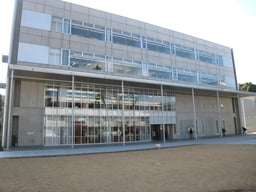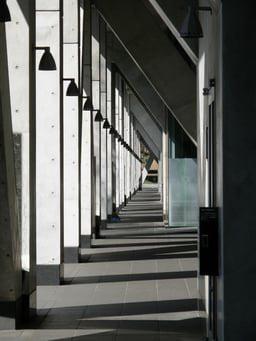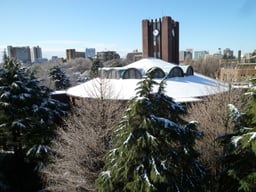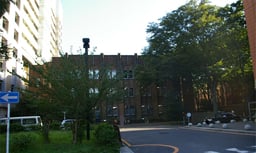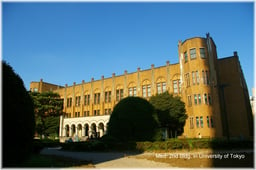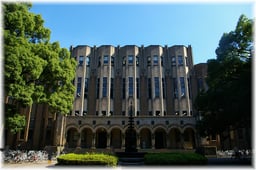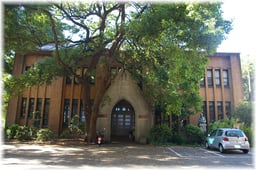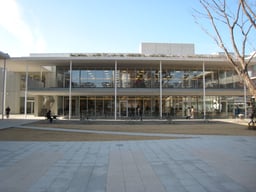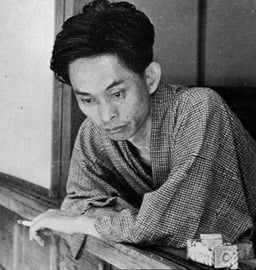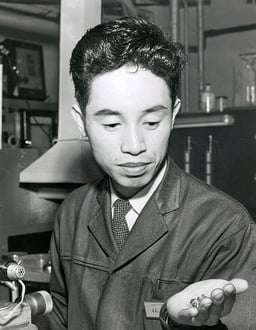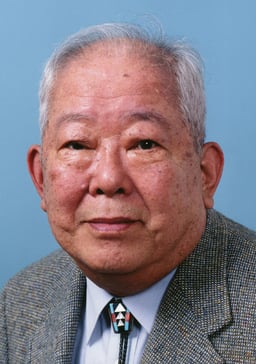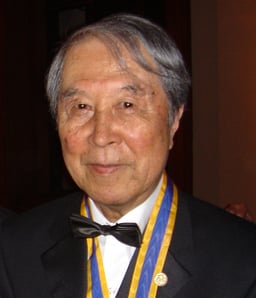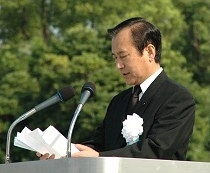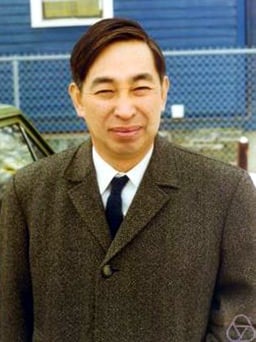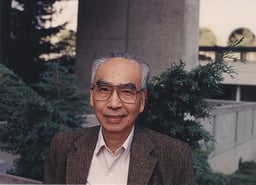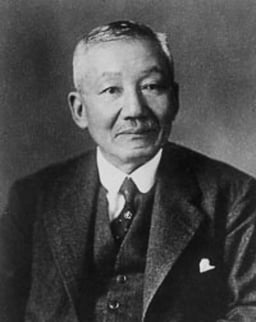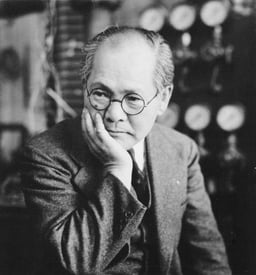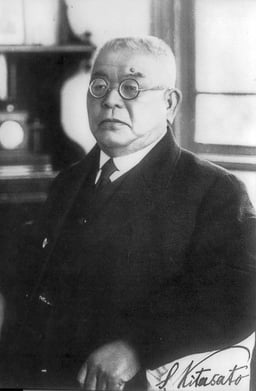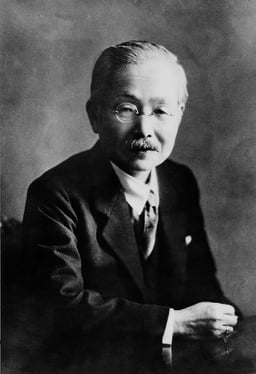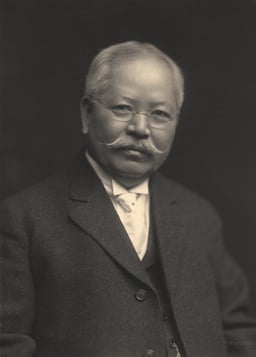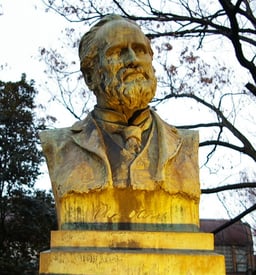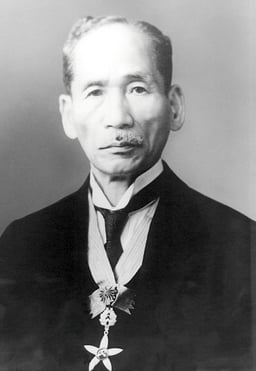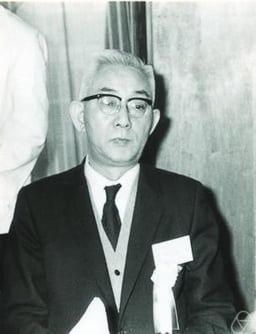University of Tokyo

University of Tokyo

| Latin:Universitas Tociensis | ||
| Imperial UniversityTokyo Imperial University | ||
| Type | Public (National) | |
| Established | 1877 | |
| IARUAPRUAEARUAGSBESETOHAAALAUWashington University in St. LouisMcDonnell International Scholars Academy[1] | ||
| President | Makoto Gonokami(五神真) | |
| 2,209 full-time276 part-time (2017)[2] | ||
| Students | 28,253 (2017)[3] | |
| Undergraduates | 14,002 | |
| Postgraduates | 14,251 | |
| 5,771 | ||
| 804 research students | ||
| Location | ||
| Campus | Urban | |
| Colors | Light Blue | |
| Athletics | 46 varsity teams | |
| Website | ||
Toyo Keizai
| General | 1 |
Kawaijuku
| General | 1 |
T. Reuters
| Research | 1 |
WE
| Employment | 12 |
NBP
| Reputation | 2 |
Shimano
| Selectivity | SA |
| QS(World Ranking version)[38] | General | 5 |
| QS(Asian Ranking version)[39] | General | 13 |
THE
| General | 7 |
ARWU
| Research | 1 |
THE
| General | 46 |
QS
| General | 28 |
ARWU
| Research | 24 |
| Social Sciences & Humanities | ||
| LAW | ||
Asahi
| Research | 1 |
BE Success
| Qualification | 1 |
BE Pass rate
| Qualification | 3 |
| ECONOMICS | ||
RePec
| Research | 1 |
RePec
| Research | 92 |
| BUSINESS & MANAGEMENT | ||
Eduni MBA
| General | 4 |
Eduni MBA
| General | 111 |
CPA Success
| Qualification | 4 |
| Natural Sciences & Technology | ||
| Engineering | ||
| MATERIALS SCIENCE | ||
T.Reuters
| Research | 3 |
T.Reuters
| Research | 19 |
| PHYSICS | ||
T.Reuters
| Research | 1 |
T.Reuters
| Research | 2 |
| CHEMISTRY | ||
T.Reuters
| Research | 2 |
T.Reuters
| Research | 5 |
| BIOLOGY & BIOCHEMISTRY | ||
T.Reuters
| Research | 1 |
T.Reuters
| Research | 3 |
| MATHEMATICS | ||
ARWU
| Research | 2 |
ARWU
| Research | 51-71 |
| COMPUTER SCIENCE | ||
ARWU
| Research | 1 |
ARWU
| Research | 76-100 |
| Life Sciences | ||
| IMMUNOLOGY | ||
T.Reuters
| Research | 2 |
T.Reuters
| Research | 20 |
| PHARMACOLOGY & TOXICOLOGY | ||
T.Reuters
| Research | 1 |
T.Reuters
| Research | 5 |
| ||
The university has 10 faculties and enrolls about 30,000 students, 2,100 of whom are international students. Its five campuses are in Hongō, Komaba, Kashiwa, Shirokane and Nakano. It is among the top echelon of the select Japanese universities assigned additional funding under the MEXT's Top Global University Project to enhance Japan's global educational competitiveness.[6]
As of 2018, University of Tokyo's alumni, faculty members and researchers include 17 Prime Ministers, 16 Nobel Prize laureates, 3 Pritzker Prize laureates, 3 astronauts, and 1 Fields Medalist.[7]
| Latin:Universitas Tociensis | ||
| Imperial UniversityTokyo Imperial University | ||
| Type | Public (National) | |
| Established | 1877 | |
| IARUAPRUAEARUAGSBESETOHAAALAUWashington University in St. LouisMcDonnell International Scholars Academy[1] | ||
| President | Makoto Gonokami(五神真) | |
| 2,209 full-time276 part-time (2017)[2] | ||
| Students | 28,253 (2017)[3] | |
| Undergraduates | 14,002 | |
| Postgraduates | 14,251 | |
| 5,771 | ||
| 804 research students | ||
| Location | ||
| Campus | Urban | |
| Colors | Light Blue | |
| Athletics | 46 varsity teams | |
| Website | ||
Toyo Keizai
| General | 1 |
Kawaijuku
| General | 1 |
T. Reuters
| Research | 1 |
WE
| Employment | 12 |
NBP
| Reputation | 2 |
Shimano
| Selectivity | SA |
| QS(World Ranking version)[38] | General | 5 |
| QS(Asian Ranking version)[39] | General | 13 |
THE
| General | 7 |
ARWU
| Research | 1 |
THE
| General | 46 |
QS
| General | 28 |
ARWU
| Research | 24 |
| Social Sciences & Humanities | ||
| LAW | ||
Asahi
| Research | 1 |
BE Success
| Qualification | 1 |
BE Pass rate
| Qualification | 3 |
| ECONOMICS | ||
RePec
| Research | 1 |
RePec
| Research | 92 |
| BUSINESS & MANAGEMENT | ||
Eduni MBA
| General | 4 |
Eduni MBA
| General | 111 |
CPA Success
| Qualification | 4 |
| Natural Sciences & Technology | ||
| Engineering | ||
| MATERIALS SCIENCE | ||
T.Reuters
| Research | 3 |
T.Reuters
| Research | 19 |
| PHYSICS | ||
T.Reuters
| Research | 1 |
T.Reuters
| Research | 2 |
| CHEMISTRY | ||
T.Reuters
| Research | 2 |
T.Reuters
| Research | 5 |
| BIOLOGY & BIOCHEMISTRY | ||
T.Reuters
| Research | 1 |
T.Reuters
| Research | 3 |
| MATHEMATICS | ||
ARWU
| Research | 2 |
ARWU
| Research | 51-71 |
| COMPUTER SCIENCE | ||
ARWU
| Research | 1 |
ARWU
| Research | 76-100 |
| Life Sciences | ||
| IMMUNOLOGY | ||
T.Reuters
| Research | 2 |
T.Reuters
| Research | 20 |
| PHARMACOLOGY & TOXICOLOGY | ||
T.Reuters
| Research | 1 |
T.Reuters
| Research | 5 |
| ||
History

Faculty of Law building in 1902, before its destruction by the 1923 Great Kantō earthquake
The university was chartered by the Meiji government in 1877 under its current name by amalgamating older government schools for medicine, various traditional scholars and modern learning. It was renamed "the Imperial University (帝國大學, Teikoku daigaku)" in 1886, and then Tokyo Imperial University (東京帝國大學, Tōkyō teikoku daigaku) in 1897 when the Imperial University system was created. In September 1923, an earthquake and the following fires destroyed about 700,000 volumes of the Imperial University Library.[8] The books lost included the Hoshino Library (星野文庫, Hoshino bunko), a collection of about 10,000 books.[8][9] The books were the former possessions of Hoshino Hisashi before becoming part of the library of the university and were mainly about Chinese philosophy and history.
In 1947, after Japan's defeat in World War II, it re-assumed its original name. With the start of the new university system in 1949, Todai swallowed up the former First Higher School (today's Komaba campus) and the former Tokyo Higher School, which thenceforth assumed the duty of teaching first- and second-year undergraduates, while the faculties on Hongo main campus took care of third- and fourth-year students.
Although the university was founded during the Meiji period, it has earlier roots in the Astronomy Agency (天文方; 1684), Shoheizaka Study Office (昌平坂学問所; 1797), and the Western Books Translation Agency (蕃書和解御用; 1811).[10] These institutions were government offices established by the 徳川幕府 Tokugawa shogunate (1603–1867), and played an important role in the importation and translation of books from Europe.
Kikuchi Dairoku, an important figure in Japanese education, served as president of Tokyo Imperial University.
For the 1964 Summer Olympics, the university hosted the running portion of the modern pentathlon event.[11]
On 20 January 2012, Todai announced that it would shift the beginning of its academic year from April to September to align its calendar with the international standard.
The shift would be phased in over five years.[12][13] But this unilateral announcement by the president was received badly and the university abandoned the plans.
According to the Japan Times, the university had 1,282 professors in February 2012. Of those, 58 were women.[12]
In the fall of 2012 and for the first time, the University of Tokyo started two undergraduate programs entirely taught in English and geared toward international students — Programs in English at Komaba (PEAK) — the International Program on Japan in East Asia and the International Program on Environmental Sciences.[14][15] In 2014, the School of Science at the University of Tokyo introduced an all-English undergraduate transfer program called Global Science Course (GSC).[16]
Academics
Faculty of Agriculture
College of Arts and Sciences
Faculty of Economics
Faculty of Education
Faculty of Engineering
Faculty of Law
Faculty of Letters
Faculty of Medicine
Faculty of Pharmaceutical Sciences
Faculty of Science
Graduate School of Agricultural and Life Sciences
Graduate School of Arts and Sciences
Graduate School of Economics
Graduate School of Education
Graduate School of Engineering
Graduate School of Frontier Sciences
Graduate School of Humanities and Sociology
Graduate School of Information Science and Technology
Graduate School of Interdisciplinary Information Studies
Graduate Schools for Law and Politics
Graduate School of Mathematical Sciences
Graduate School of Medicine
Graduate School of Pharmaceutical Sciences
Graduate School of Public Policy
Graduate School of Science
Graduate programs
Todai Law School is considered as one of the top Law schools in Japan, ranking top in the number of successful candidates of Japanese Bar Examination in 2009 and 2010.[19] Eduniversal ranked Japanese business schools, and the Faculty of Economics in Todai is placed 4th in Japan (111th in the world).[20]
Research
The University of Tokyo is considered a top research institution of Japan.
It receives the largest amount of national grants for research institutions, Grants-in-Aid for Scientific Research, receiving 40% more than the University with 2nd largest grants and 90% more than the University with 3rd largest grants.[21] This massive financial investment from the Japanese government directly affects Todai's research outcomes. According to Thomson Reuters, Todai is the best research university in Japan.[22] Its research excellence is especially distinctive in Physics (1st in Japan, 2nd in the world), Biology & Biochemistry (1st in Japan, 3rd in the world), Pharmacology & Toxicology (1st in Japan, 5th in the world), Materials Science (3rd in Japan, 19th in the world), Chemistry (2nd in Japan, 5th in the world), and Immunology (2nd in Japan, 20th in the world).[23]
In another ranking, Nikkei Shimbun on 2004/2/16 surveyed about the research standards in Engineering studies based on Thomson Reuters, Grants in Aid for Scientific Research and questionnaires to heads of 93 leading Japanese Research Centers, and Todai was placed 4th (research planning ability 3rd/informative ability of research outcome 10th/ability of business-academia collaboration 3rd) in this ranking.[24] Weekly Diamond also reported that Todai has the 3rd highest research standard in Japan in terms of research fundings per researchers in COE Program.[25] In the same article, it's also ranked 21st in terms of the quality of education by GP funds per student.
Todai also has been recognized for its research in the social sciences and humanities.
In January 2011, Repec ranked Todai's Economics department as Japan's best economics research university.[26] And it is the only Japanese university within world top 100.[27] Todai has produced 9 presidents of the Japanese Economic Association, the largest number in the association.[28] Asahi Shimbun summarized the amount of academic papers in Japanese major legal journals by university, and Todai was ranked top during 2005-2009.[29]
Research institutes
Institute of Medical Science
Earthquake Research Institute
Institute of Oriental Culture
Institute of Social Science
Institute of Industrial Science
Historiographical Institute
Institute of Molecular and Cellular Biosciences
Institute for Cosmic Ray Research
Institute for Solid State Physics
Atmosphere and Ocean Research Institute
Research Center for Advanced Science and Technology
The University's School of Science and the Earthquake Research Institute are both represented on the national Coordinating Committee for Earthquake Prediction.[31]
Rankings and reputation
Nikkei BP has been publishing a ranking system "Brand rankings of Japanese universities" every year, composed by the various indications related to the power of brand, and Todai has been 2nd in 2009-2010 in Greater Tokyo Area.[36][35] The university has been ranked 1st during 2006-2010 in the ranking "Truly Strong Universities" by Toyo Keizai.[32] In another ranking, Japanese prep school Kawaijuku ranked Todai as the best university in Japan.[33]
Todai was ranked second in the world, behind Harvard University, in Mines ParisTech: Professional Ranking of World Universities (2011), which measured universities' numbers of alumni holding CEO positions in Fortune Global 500 companies.
Academic Ranking of World Universities ranked the University of Tokyo 1st in Asia and 20th in the world in 2012.
Times Higher Education World University Rankings ranked the University of Tokyo 27th in the world in 2013[56] and 1st in the Asia University ranking in 2013.[57] In 2015, Times Higher Education World University Rankings ranked the institution 23rd in the world.[58] It ranks 12th in the world according to the Times Higher Education World Reputation Rankings 2016.
QS World University Rankings[59] in 2011 ranked the University of Tokyo 25th in the world (in 2010 Times Higher Education World University Rankings and QS World University Rankings parted ways to produce separate rankings). In the 2011 QS Asian University Rankings, which employs a different methodology, the University of Tokyo came 4th.[60] Currently, University of Tokyo holds ranks 9th & 11th respectively for Natural Sciences & Engineering, two of its traditionally strong disciplines.[61][62]
In 2019, University of Tokyo ranked 24th among the universities around the world by SCImago Institutions Rankings.[63]
Times Higher Education World Reputation Rankings ranked the University of Tokyo 12th in the world also 1st in Asia in 2016.
Global University Ranking ranked the University of Tokyo 3rd in the world and 1st in Asia.[64]
Human Resources & Labor Review, a human competitiveness index & analysis published in Chasecareer Network, ranked the university 21st internationally and 1st in Asia in 2010.[65]
Nature Index ranked the University of Tokyo #6 in 2015 and #8 in 2017 in its Annual Tables, which measure the largest contributors to papers published in 82 leading journals.[66][67][68]
In November 2018 Expertscape recognized it as #9 in the world for expertise in Pancreatic Cancer.[69]
University of Tokyo was ranked 26th among the world's best universities and 1st in Asia and Japan in 2019 according to the Top 500 Global Universities Rankings produced by CEOWORLD magazine.[70]
Todai alumni are distinctively successful in Japanese industries.
According to the Weekly Economist's 2010 rankings, graduates from Todai have the 12th best employment rate in 400 major companies in Japan.[34] However, this lower ranking position is because of the large number of alumni who become government bureaucrats, which is more than double of alumni from any other universities.[72] In fact, alumni of Todai have the highest average salary in Japan, according to PRESIDENT.[73]
Campus
Hongo Campus
The main Hongo campus occupies the former estate of the Maeda family, Edo period feudal lords of Kaga Province. One of the university's best known landmarks, Akamon (the Red Gate), is a relic of this era. The symbol of the university is the ginkgo leaf, from the trees found throughout the area. The Hongo campus also hosts the University of Tokyo's annual May Festival.[74]
Sanshiro Pond
Sanshiro Pond (三四郎池, Sanshirō ike), university's Hongo campus, dates to 1615. After the fall of the Osaka Castle, the shōgun gave this pond and its surrounding garden to Maeda Toshitsune. With further development of the garden by Maeda Tsunanori, it became known as one of the most beautiful gardens in Edo (Now Tokyo), with the traditional eight landscapes and eight borders, and known for originality in artificial pond, hills, and pavilions. It was at that time known as Ikutoku-en (Garden of Teaching Virtue). The pond's contours are in the shape of the character kokoro or shin (heart), and thus its official name is Ikutoku-en Shinjiike. It has been commonly called Sanshiro Pond after the title of Natsume Sōseki's novel Sanshiro.
Komaba Campus
One of the five campuses of the University of Tokyo, the Komaba Campus is home to the College of Arts and Sciences, the Graduate School of Arts and Sciences, the Graduate School of Mathematical Sciences, and a number of advanced research facilities and campus services.
This is the campus where all the freshmen and sophomores of the University of Tokyo spend their college life.
The University of Tokyo is the only university in Japan which has a system of two years of general education before students can choose and move on to special fields of study.
The Komaba Campus is the cornerstone of general education, and was designated as the "center of excellence" for three new areas of research by the Ministry of Education and Science.
There are currently over 7,000 students (freshmen and sophomores) enrolled in the general education courses, about 450 students (juniors and seniors) pursuing their specialties in the College of Arts and Sciences, and 1,400 graduate students in the advanced study.
Komaba Campus Building
[[INLINE_IMAGE|//upload.wikimedia.org/wikipedia/commons/thumb/5/5c/Tokyo_University_-Komaba_campus-Main_Auditorium.jpg/300px-Tokyo_University-Komaba_campus-Main_Auditorium.jpg|//upload.wikimedia.org/wikipedia/commons/thumb/5/5c/Tokyo_University-Komaba_campus-Main_Auditorium.jpg/451px-Tokyo_University-Komaba_campus-Main_Auditorium.jpg 1.5x, //upload.wikimedia.org/wikipedia/commons/thumb/5/5c/Tokyo_University-Komaba_campus-Main_Auditorium.jpg/600px-Tokyo_University-Komaba_campus-_Main_Auditorium.jpg 2x||h150|w200]] Main Auditorium
Southern Complex
Shirokanedai Campus
The relatively small Shirokanedai Campus[75] hosts the Institute of Medical Science of the University of Tokyo (IMSUT), which is entirely dedicated to postgraduate studies. The campus is focused on genome research, including among its facilities the Human Genome Center (HGC), which have at its disposal the largest supercomputer in the field.[76]
Notable alumni and faculty members
The university has produced many notable people.
15 prime ministers of Japan have studied at the University of Tokyo.[77] Former prime minister Kiichi Miyazawa ordered Japanese government agencies to reduce the rate of employees who had attended the university's law faculty to below 50 percent due to concerns about diversity in the bureaucracy.[78]
Ten alumni of University of Tokyo have received the Nobel Prize.[79]
Yasunari Kawabata, Literature, 1968
Leo Esaki, Physics, 1973
Eisaku Satō, Peace, 1974
Kenzaburō Ōe, Literature, 1994
Masatoshi Koshiba, Physics, 2002
Yoichiro Nambu, Physics, 2008
Ei-ichi Negishi, Chemistry, 2010
Takaaki Kajita, Physics, 2015
Satoshi Ōmura, Medicine, 2015
Yoshinori Ohsumi, Medicine, 2016
Two alumni of University of Tokyo have received the Fields Medal or Gauss Prize.
Kunihiko Kodaira, 1954
Kiyosi Itô, 2006
Four have received the Pritzker Architecture Prize:
Toyo Ito
Kenzo Tange
Fumihiko Maki
Arata Isozaki
Nobel laureates
Scientists
See also
Imperial College of Engineering
Earthquake engineering
Kikuchi Dairoku
Koishikawa Botanical Gardens
Nikko Botanical Garden
The University of Tokyo Library
International Journal of Asian Studies published in association with the Institute for Advanced Studies on Asia, University of Tokyo

